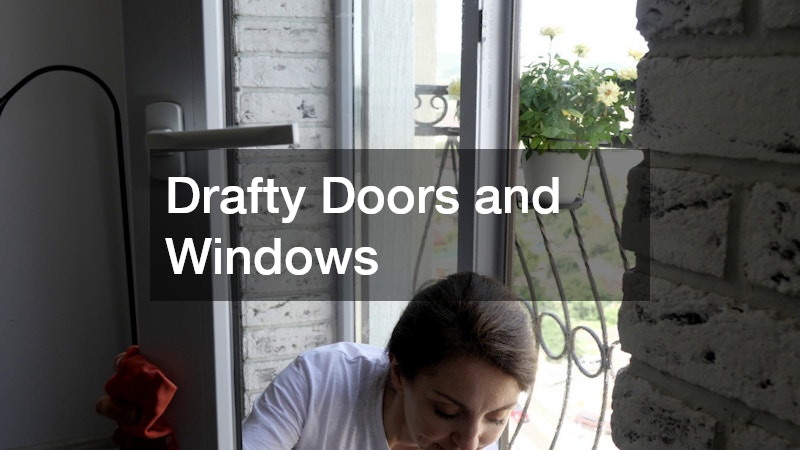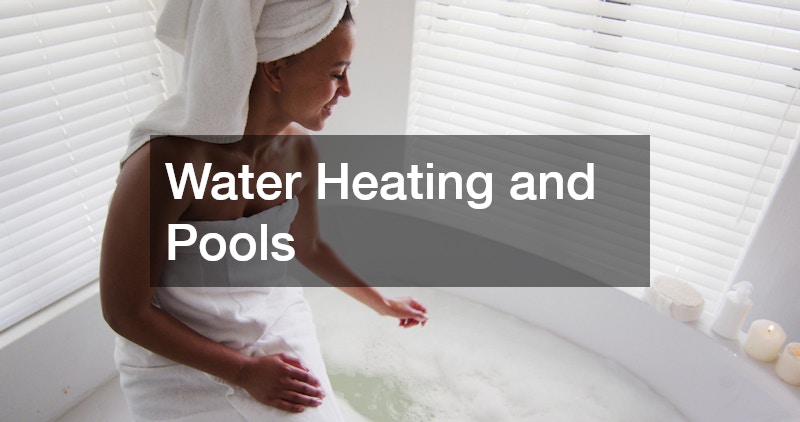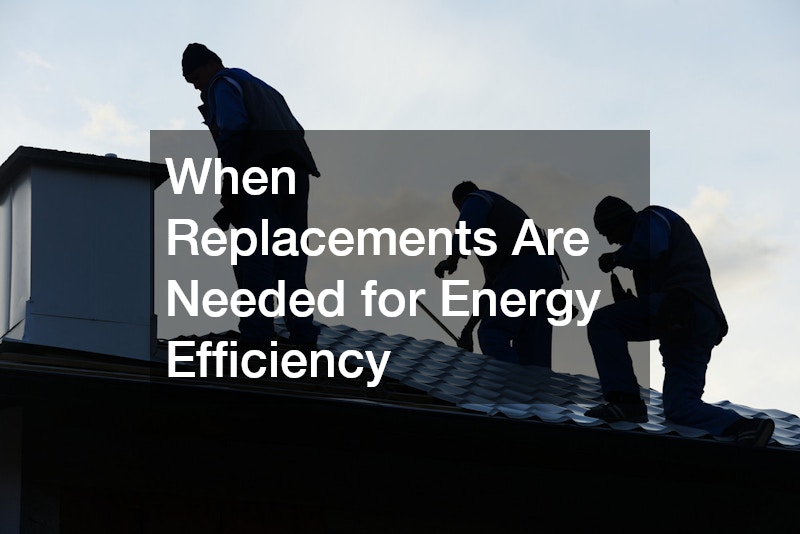Many homeowners are surprised to learn how much energy is wasted in everyday life, leading to higher utility bills and unnecessary environmental impact. Small leaks, outdated systems, or overlooked maintenance can significantly reduce a home’s energy efficiency. Understanding where energy loss occurs is the first step toward making meaningful improvements.
This guide explores common energy-wasting areas in homes and offers practical solutions to prevent loss, save money, and maintain comfort year-round. From structural vulnerabilities to mechanical inefficiencies, each section highlights actionable strategies backed by professional practices. Whether you’re upgrading insulation, addressing leaks, or modernizing systems, proactive measures can dramatically reduce waste.
Drafty Doors and Windows

One of the most common sources of energy loss is poorly sealed doors and windows. Even small gaps around frames can allow cold air in during winter and let cool air escape during summer, forcing heating and cooling systems to work harder. Over time, these leaks can significantly increase energy bills and reduce indoor comfort. Homeowners often overlook these areas because the gaps can be subtle—a slight draft near the baseboard or a door that doesn’t close flush may seem minor, but over weeks and months, these small leaks add up. Additionally, old or warped doors and windows can create uneven sealing that reduces the effectiveness of insulation, leading to fluctuating indoor temperatures and increased reliance on heating and cooling systems. Proper inspection, sealing, and maintenance can prevent these losses and dramatically improve both energy efficiency and overall comfort.
Regular inspection and maintenance are critical. For example, checking weatherstripping and caulking can reveal gaps that need sealing. Homeowners often notice drafts near older doors, which may require professional garage door repair services if the door itself is warped or misaligned. Ensuring doors close tightly and windows are properly sealed prevents air leakage, reducing strain on HVAC systems and improving overall energy efficiency. Implementing these measures not only lowers utility costs but also extends the life of heating and cooling equipment.
Inefficient Heating Systems
Outdated or poorly maintained heating systems are a major energy drain. Furnaces, boilers, and heaters that operate inefficiently consume more energy to maintain the desired temperature, and small malfunctions can compound over time, significantly increasing utility costs. For instance, clogged filters, malfunctioning thermostats, or improperly sized units may struggle to heat rooms evenly, leading to wasted energy as systems overwork to compensate. Many homeowners don’t realize that even minor inefficiencies can add hundreds of dollars to their annual bills, especially during long winters. Regular inspection and timely maintenance are key to ensuring heating systems operate at peak efficiency. Professional services can identify hidden issues that are not obvious to the untrained eye, such as airflow restrictions or mechanical wear, allowing homeowners to correct them before they result in wasted energy and discomfort.
Homeowners should schedule regular inspections and maintenance to ensure that heating equipment functions efficiently. A professional local AC repairs technician can also assess older systems that may require balancing, cleaning, or component replacement to optimize performance. Regular servicing includes checking filters, cleaning ducts, and ensuring proper airflow, all of which prevent wasted energy. Upgrading to a modern system or supplementing with energy-efficient solutions reduces unnecessary consumption and ensures the home remains comfortable in extreme temperatures.
Roof and Attic Issues
Roofs and attics are critical components of energy efficiency, yet they’re often neglected until leaks or structural damage occur. Poor insulation, aging roofing materials, or small cracks can allow heat to escape during winter and enter during summer, forcing heating and cooling systems to work harder. Moisture accumulation, mold, or structural weaknesses further reduce energy efficiency while potentially causing costly repairs. Homeowners may not notice attic heat loss because it’s subtle, manifesting only as slightly higher heating bills or occasional cold drafts, but the cumulative effect is significant. Professional inspection by shingle roof coating specialists and insulation professionals ensures that the attic and roof system function optimally, preventing air leaks, improving energy retention, and extending the life of the home’s structure.
Professional inspection by shingle roof coating specialists can extend the life of a roof and improve energy retention. Coatings reflect sunlight, reduce heat absorption, and protect underlying materials from deterioration. Additionally, addressing insulation deficiencies with insulation professionals ensures that heat remains in the home during winter and is blocked during summer. Homeowners often underestimate the impact of proper attic insulation and roof treatments on overall energy consumption. Investing in these upgrades can result in noticeable savings on utility bills while preventing long-term damage to the home’s structure.
HVAC and Airflow Problems

Inefficient airflow and poorly maintained HVAC systems contribute heavily to wasted energy. Leaks in ducts, blocked vents, or aging components can prevent conditioned air from reaching the intended spaces, leading to uneven temperatures and forcing the system to operate longer and harder. Many homeowners notice this issue only when some rooms are too hot or too cold, but the root cause is often hidden in the ductwork or system design. Poor airflow also decreases indoor air quality and increases wear on components, compounding inefficiency over time. By hiring a certified HVAC company, homeowners can ensure proper maintenance, duct cleaning, and balancing to improve system performance. Simple upgrades such as zoning systems or programmable thermostats further prevent energy waste by directing heating and cooling only where it’s needed most.
A certified HVAC company can inspect ducts, clean systems, and recommend upgrades that improve airflow and efficiency. Regular maintenance, such as filter replacement and system balancing, reduces energy loss and prolongs equipment life. In some cases, modernizing components or integrating zoning controls allows homeowners to heat or cool only the areas in use, preventing wasted energy. Addressing these problems not only reduces bills but also enhances comfort and indoor air quality throughout the home.
Insufficient Insulation
Many older homes lack proper insulation, particularly in walls, attics, and basements, which allows heat to escape in winter and lets external heat penetrate during summer. Even small gaps, poorly fitted insulation, or compressed batts reduce thermal efficiency, forcing HVAC systems to compensate. Homeowners often underestimate the cumulative effect of these minor inefficiencies, which can result in higher energy bills and uneven indoor temperatures. Hiring professional insulation professionals ensures that all vulnerable areas are addressed with the correct materials, whether spray foam, blown-in cellulose, or upgraded batts. Proper insulation improves comfort, reduces drafts, and minimizes stress on mechanical systems, providing long-term energy savings. Small details, like sealing gaps near outlets, windows, and doors, also play a crucial role in overall efficiency.
Hiring insulation professionals ensures that homes receive the correct type and thickness of insulation for each area. For example, spray foam or blown-in insulation can fill gaps that traditional batts might miss. Upgrading insulation can also reduce drafts near windows, doors, and walls. Investing in proper insulation is a long-term solution that provides year-round energy savings, improves indoor comfort, and supports sustainable living by reducing the household’s energy footprint.
Water Heating and Pools

Heating water is another major source of energy loss in homes, especially if water heaters are inefficient or poorly maintained. Hot water can lose heat through old pipes or tank walls, and energy consumption rises when heating units operate longer than necessary to maintain the temperature. Homes with pools face additional energy demands, as unheated covers, leaks, or inefficient pumps force pool heaters to run constantly. Without proper monitoring, these losses are often unnoticed but have a direct impact on monthly bills. Partnering with a swimming pool contractor can optimize pool heating systems, install covers, and maintain efficient circulation. At the same time, adjusting water heater settings and insulating plumbing systems ensures energy isn’t wasted unnecessarily. Even small improvements like these can lead to measurable reductions in energy consumption while maintaining comfort and convenience.
Working with a swimming pool contractor can ensure that pool heaters are efficient and that covers are used to retain heat. Proper maintenance reduces energy waste and extends the life of pool equipment. Additionally, adjusting water heater settings and insulating pipes can prevent heat loss in the home’s water system. Simple preventive measures like these significantly reduce energy consumption while maintaining comfort and functionality in bathrooms and outdoor recreation spaces.
Siding and Wall Problems
Walls and exterior siding play a crucial role in a home’s energy efficiency. Cracks, gaps, or worn materials allow air and moisture to penetrate, which undermines insulation and increases the workload of heating and cooling systems. Homeowners often notice drafts or cold spots but may not realize that damaged siding and exterior walls are the cause. Addressing these vulnerabilities can prevent long-term structural damage while reducing energy loss. A professional siding contractor can inspect the exterior for compromised areas and recommend repairs or replacements that improve thermal performance. Adding insulated siding or sealing gaps around windows and doors not only prevents drafts but also enhances curb appeal and home value. Properly maintained walls and siding are a cost-effective way to protect against energy waste while ensuring the home remains comfortable in all seasons.
A siding contractor can inspect the exterior for compromised areas and recommend repairs or replacements. Installing durable, insulated siding improves energy retention and protects against weather-related wear. Addressing wall leaks or gaps around windows and doors reduces drafts, prevents water damage, and enhances overall home efficiency. Homeowners often find that upgrading siding pays off quickly in energy savings and home value, making it a worthwhile investment.
When Replacements Are Needed for Energy Efficiency

A deteriorating roof can significantly contribute to energy loss. Leaks, missing shingles, or aged materials reduce insulation effectiveness, allowing heated or cooled air to escape. Even minor damage can affect indoor temperatures, causing HVAC systems to work harder to maintain comfort. Homeowners may not notice these problems until utility bills rise noticeably or interior conditions fluctuate. Timely roof replacements can restore the home’s thermal integrity and prevent long-term damage. Modern roofing materials can reflect sunlight, reducing heat absorption in warmer months, while proper attic insulation complements the roof to maximize energy retention. Professional inspection ensures that small issues are addressed before they evolve into costly repairs or ongoing energy waste.
Modern roofing materials are designed to reflect sunlight and reduce heat absorption, lowering cooling costs in warmer months. Combined with attic insulation, a new roof enhances energy efficiency while protecting the home’s structural integrity. Professional inspections identify areas that need repair before small problems escalate, preventing costly energy waste and water damage. For many homeowners, timely roof upgrades are both a safety measure and an energy-saving investment.
Geothermal and Alternative Systems
Renewable energy solutions, such as geothermal systems, offer highly efficient alternatives for heating and cooling. These systems leverage stable underground temperatures to provide consistent indoor climate control while using far less energy than traditional methods. However, improper installation or maintenance can reduce efficiency, causing unexpected energy loss. Homeowners considering geothermal options must work with certified installers to ensure optimal system performance. Regular servicing keeps pumps, loops, and heat exchangers functioning efficiently. While initial investment may be higher, geothermal systems reduce monthly energy costs, provide reliable heating and cooling, and contribute to sustainable living.
Proper installation and maintenance are key to maximizing efficiency. Geothermal systems require professional assessment to ensure that the ground loop, heat pumps, and distribution systems are functioning optimally. While the upfront investment is higher than conventional systems, the energy savings over time can be substantial. Geothermal solutions provide consistent temperatures, lower energy bills, and reduced environmental impact, making them a smart option for energy-conscious homeowners looking to address both current and future energy wastage.
Energy loss in homes occurs in many ways, from leaks around doors and windows to inefficient mechanical systems, inadequate insulation, and aging roofs. Addressing these issues through professional inspections, targeted repairs, and strategic upgrades can dramatically improve efficiency, reduce utility bills, and enhance comfort year-round.
By focusing on key areas like doors, HVAC systems, insulation, roofing, and water heating, homeowners can stop energy waste before it becomes a costly problem. Partnering with trusted professionals—including garage door repair experts, HVAC companies, insulation professionals, pool contractors, and siding specialists—ensures that upgrades are effective and long-lasting. Even small preventive measures, like sealing drafts, cleaning systems, and monitoring equipment, make a meaningful difference.

